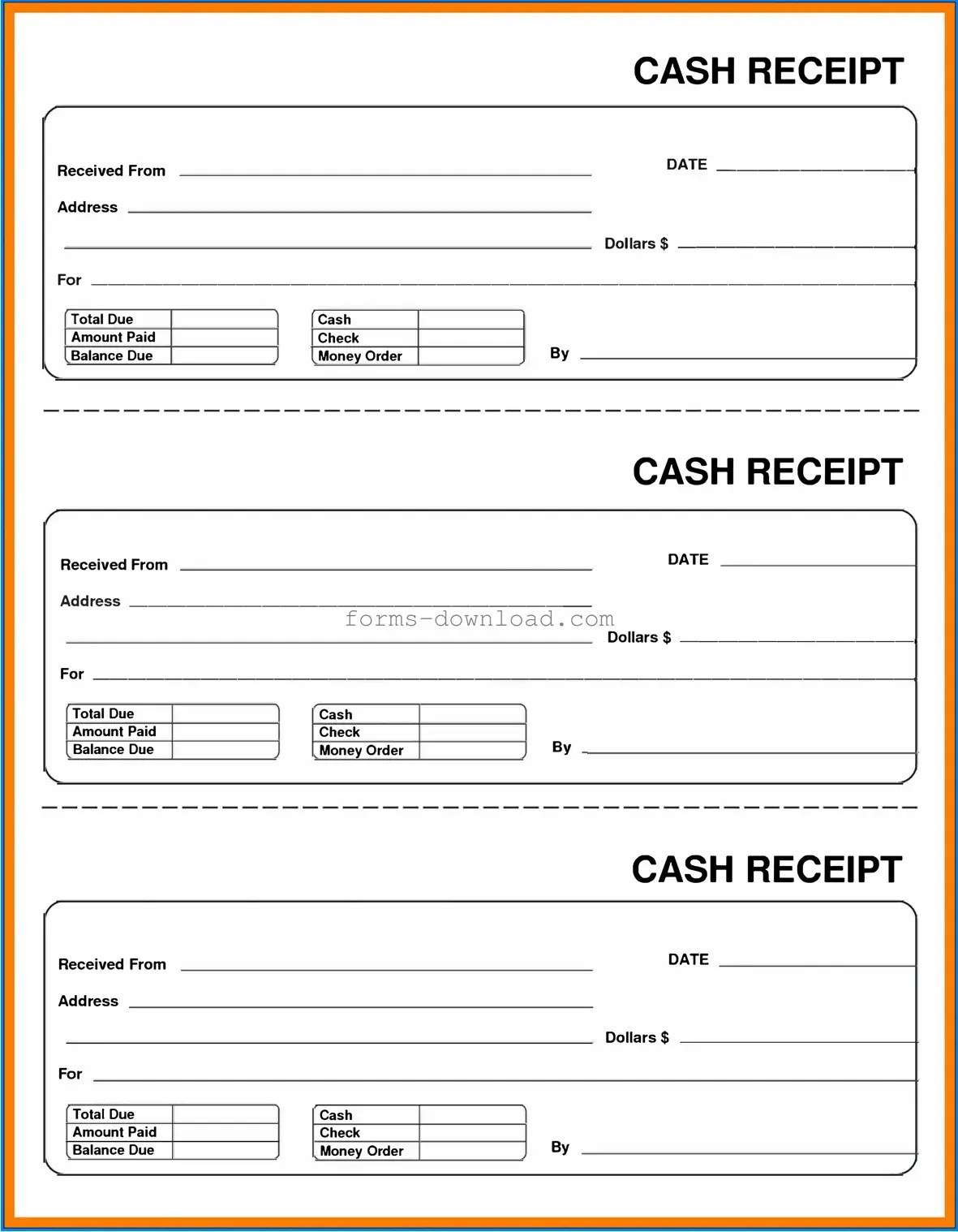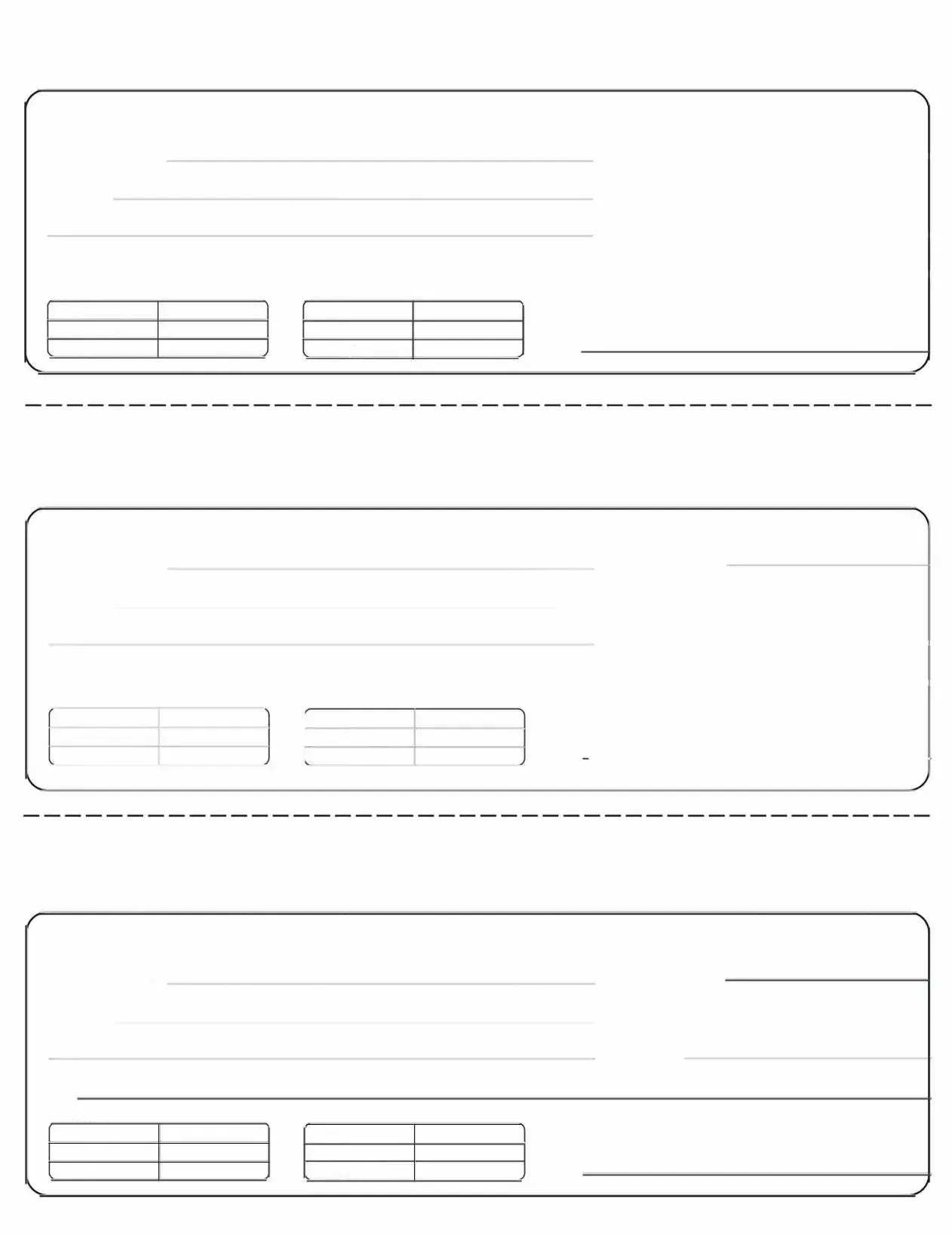In the world of finance and accounting, keeping track of transactions is essential for maintaining accurate records. One of the key tools used in this process is the Cash Receipt form. This form serves as a vital document that records the details of cash transactions, providing a clear and concise way to document incoming funds. Typically, it includes important information such as the date of the transaction, the amount received, the source of the payment, and the purpose of the payment. By capturing these details, the Cash Receipt form not only aids businesses in tracking their cash flow but also ensures that both the payer and the receiver have a reliable record for their financial documentation. Additionally, using this form can help in reconciling accounts and preparing for audits, making it an indispensable part of effective financial management. Understanding how to properly complete and utilize a Cash Receipt form can significantly enhance your financial practices, whether you are managing a small business or overseeing a large organization.

